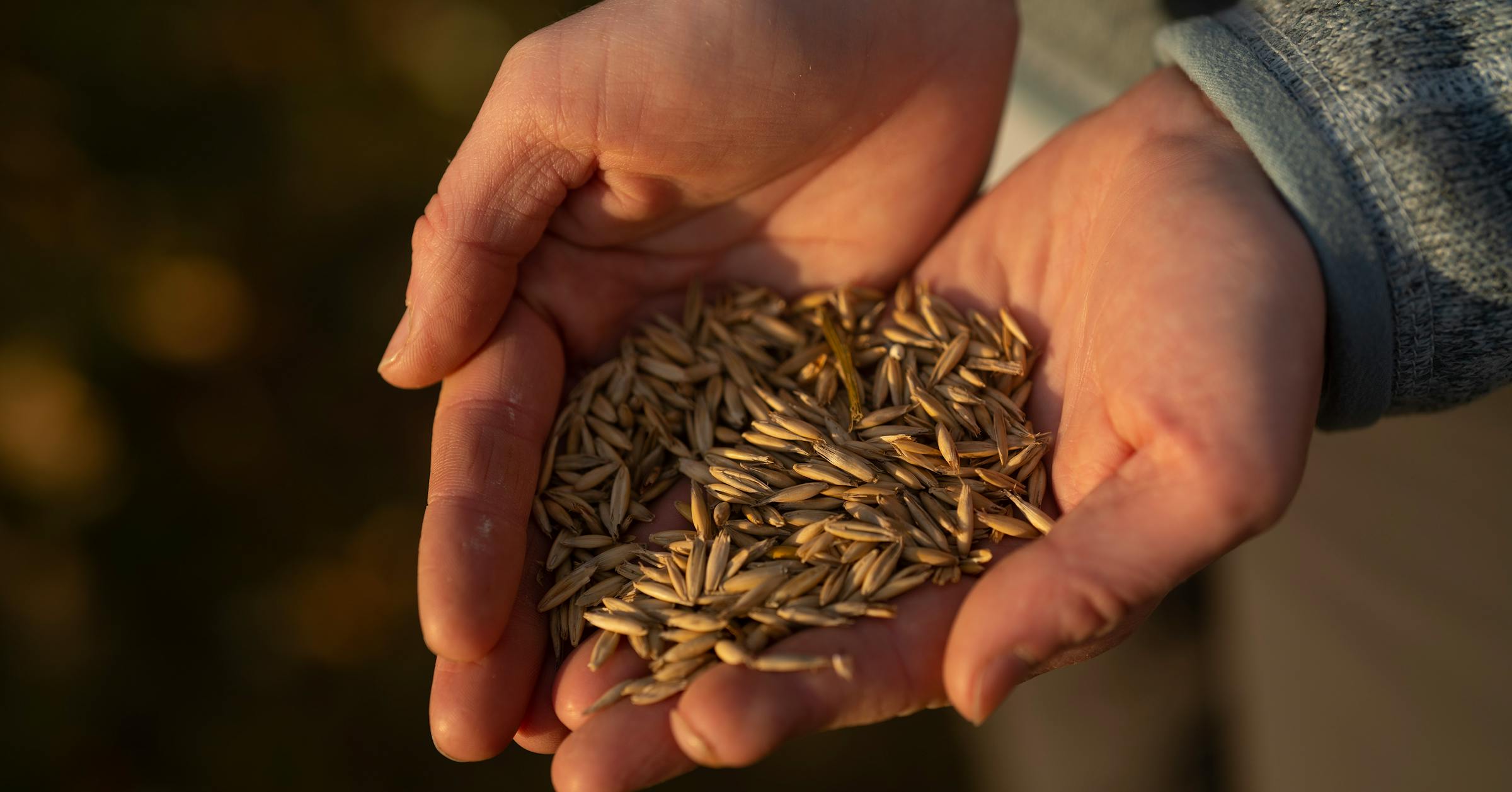
The southeastern Minnesota farm collective warns without a consistent market, the promise of a profitable new crop and cleaner water will wilt.
By Brooks Johnson
The Minnesota Star Tribune
September 26, 2025 at 5:29PM
FILE-Shea-Lynn Ramthun, the sixth-generation farmer at Flying J Farm in Cannon Falls, Minn., holds a handful of oats last fall. She and other southeastern Minnesota farmers are (Alex Kormann/The Minnesota Star Tribune)
Shea-Lynn Ramthun, who grazes cattle and grows oats amid a variety of crops at her Cannon Falls farm, said she doesn’t blame farmers for wanting to exit oats.
“It’s hard to look at a farmer and say: ‘Grow X amount of acres because it’s the right thing to do, but it might sit in your bin for two years because we can’t find anyone to buy them,’“ she said. ”Meanwhile, the demand from consumers is just going up.”
Shea-Lynn Ramthun walks through a field of volunteer oats at Flying J Farm in Cannon Falls last fall. (Alex Kormann/The Minnesota Star Tribune)
Whether in oatmeal, cereal, bars or plant-based milks, market research shows a growing appetite for the small grain.
Related Coverage
But the oats need processing first.
Green Acres Milling will open a $55 million oat mill in Albert Lea next year, though Ramthun and Larsen said the farmer-owned operation won’t fully address the market consistency problem for many farmers. And it doesn’t solve the immediate issue.
“The way I see this playing out in the long run is, we need to replicate the success of Green Acres and figure out how to open more local mills that are selling to local buyers, but this will take years,” Ramthun said. “In the meantime, we need our local, established, larger corporations to do the bare minimum of purchasing local oats.”
about the writer
Brooks Johnson
Business Reporter
Brooks Johnson is a business reporter covering Minnesota’s food industry, agribusinesses and 3M.
See More



